Building community one slackline at a time
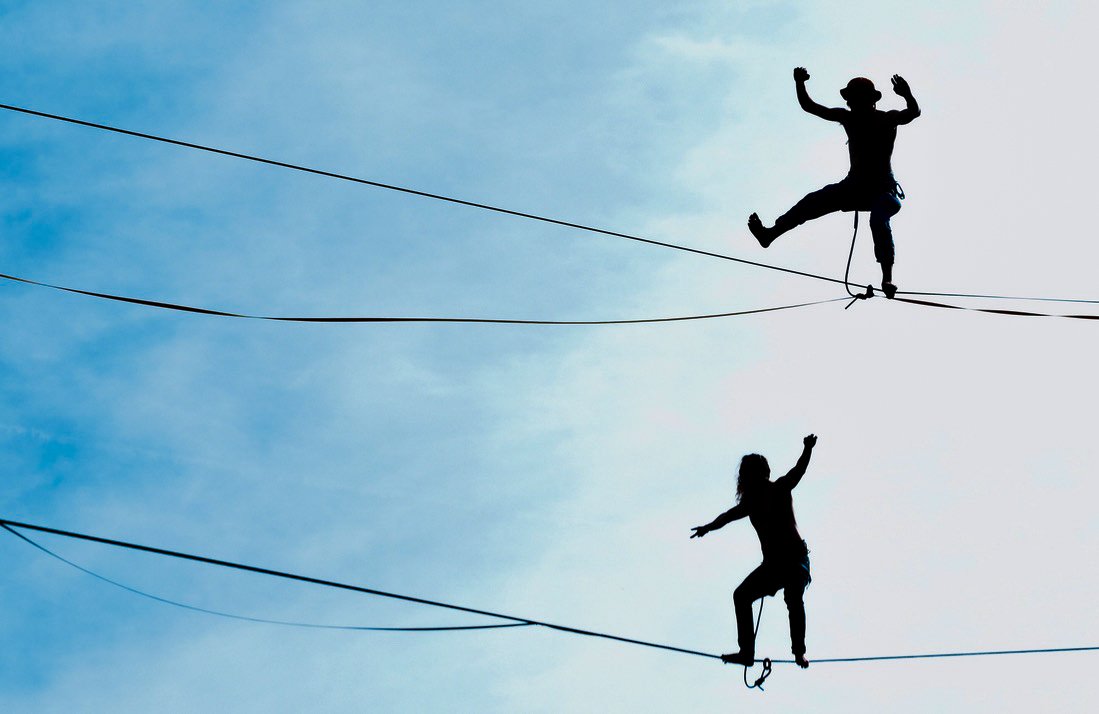
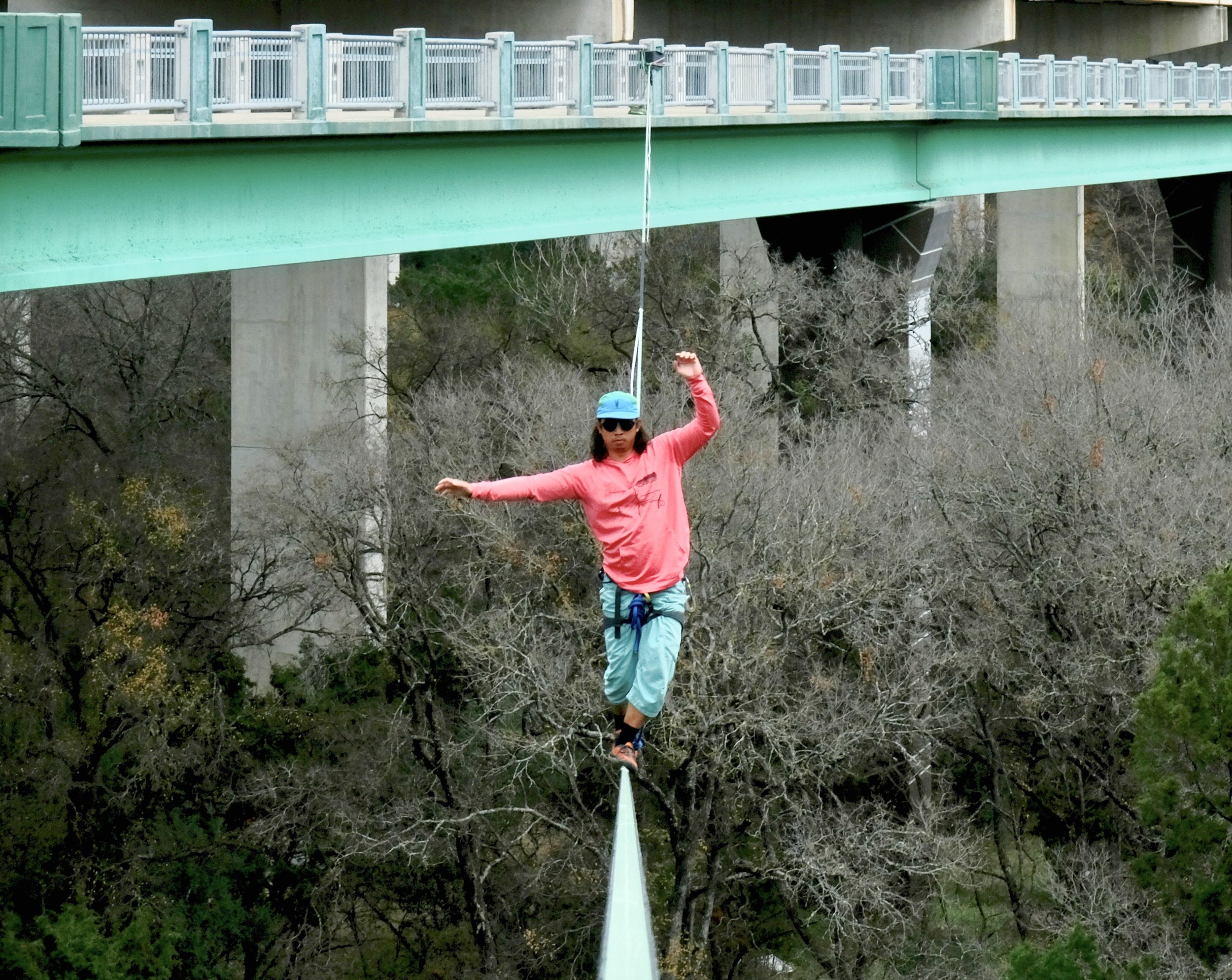
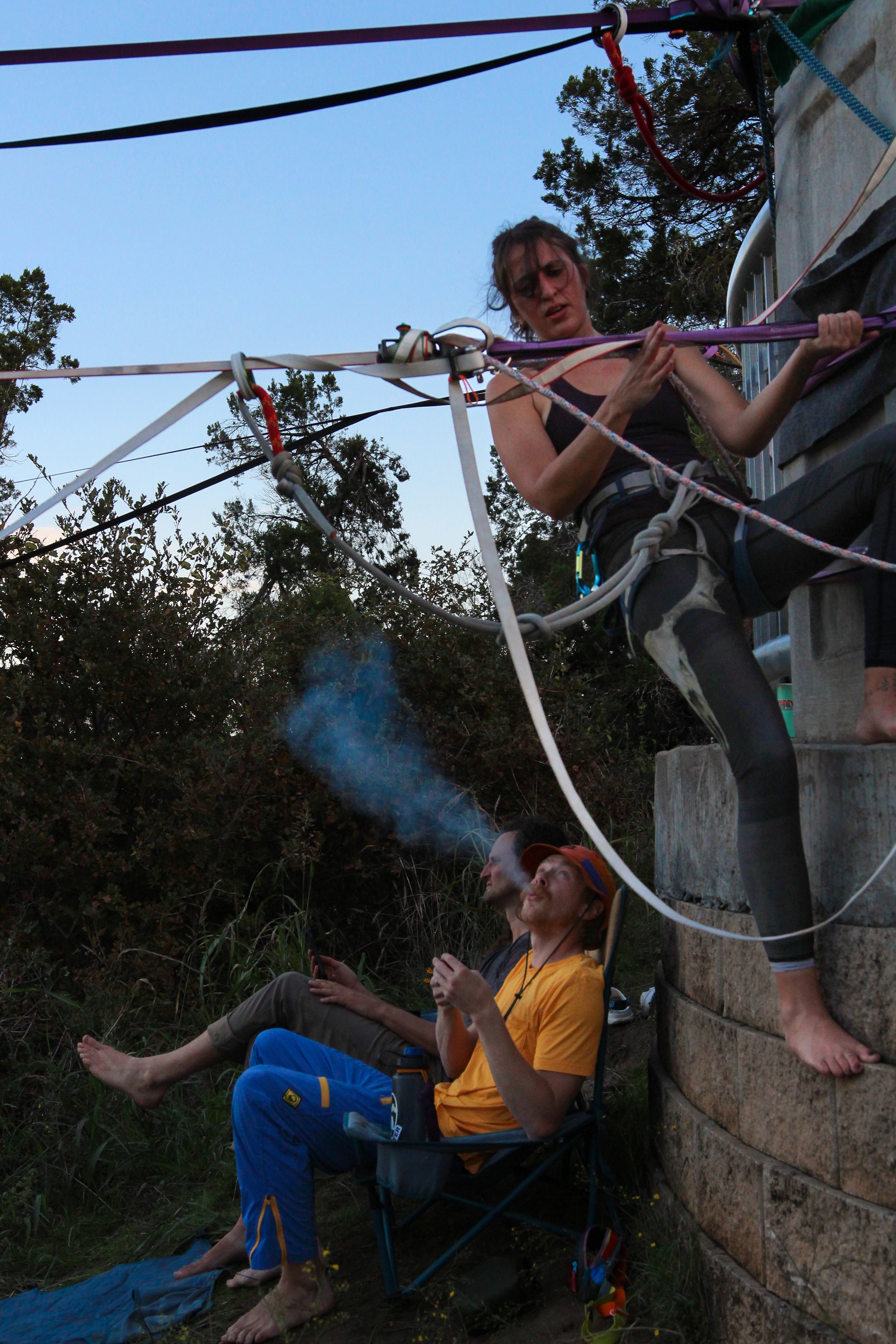
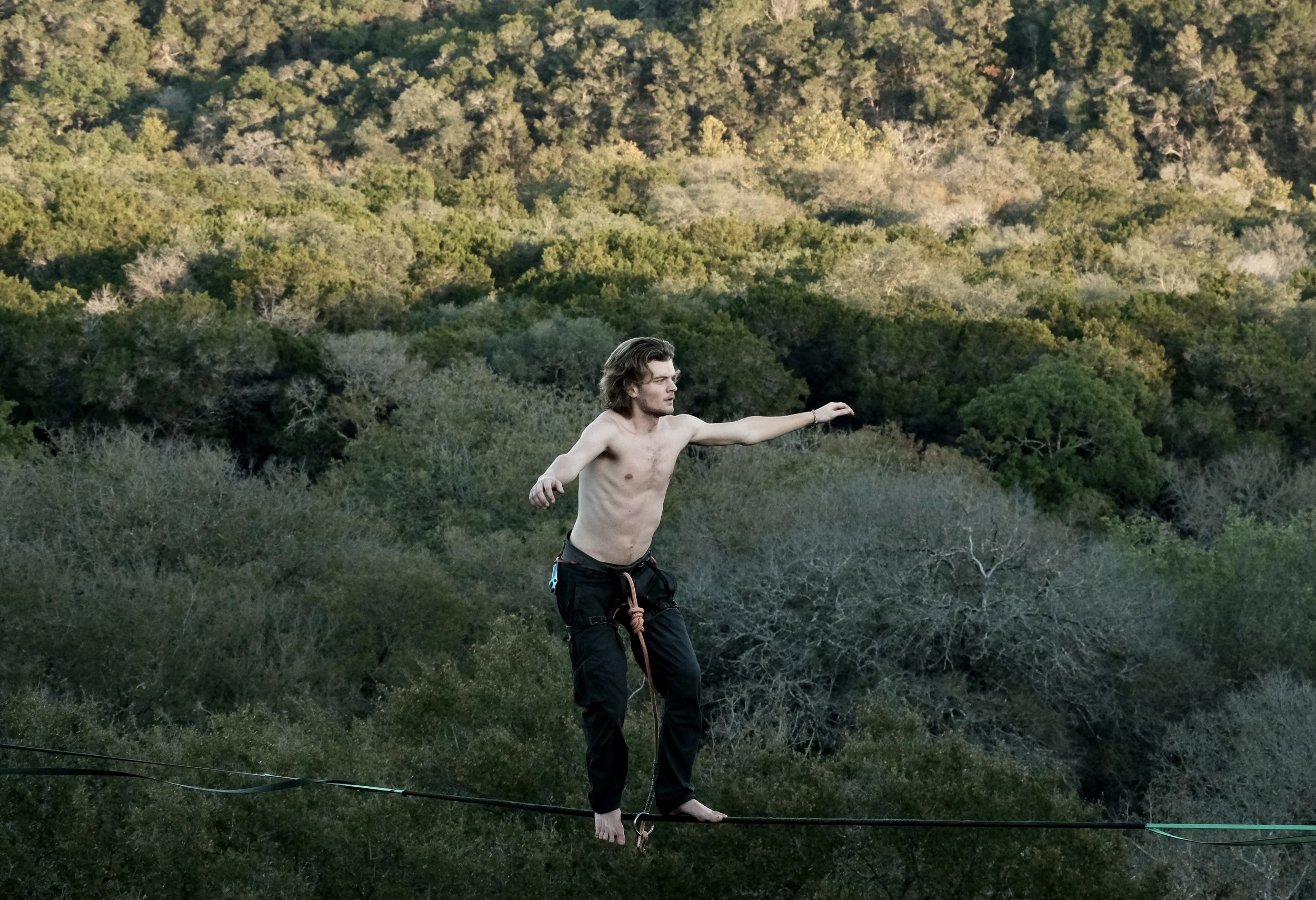
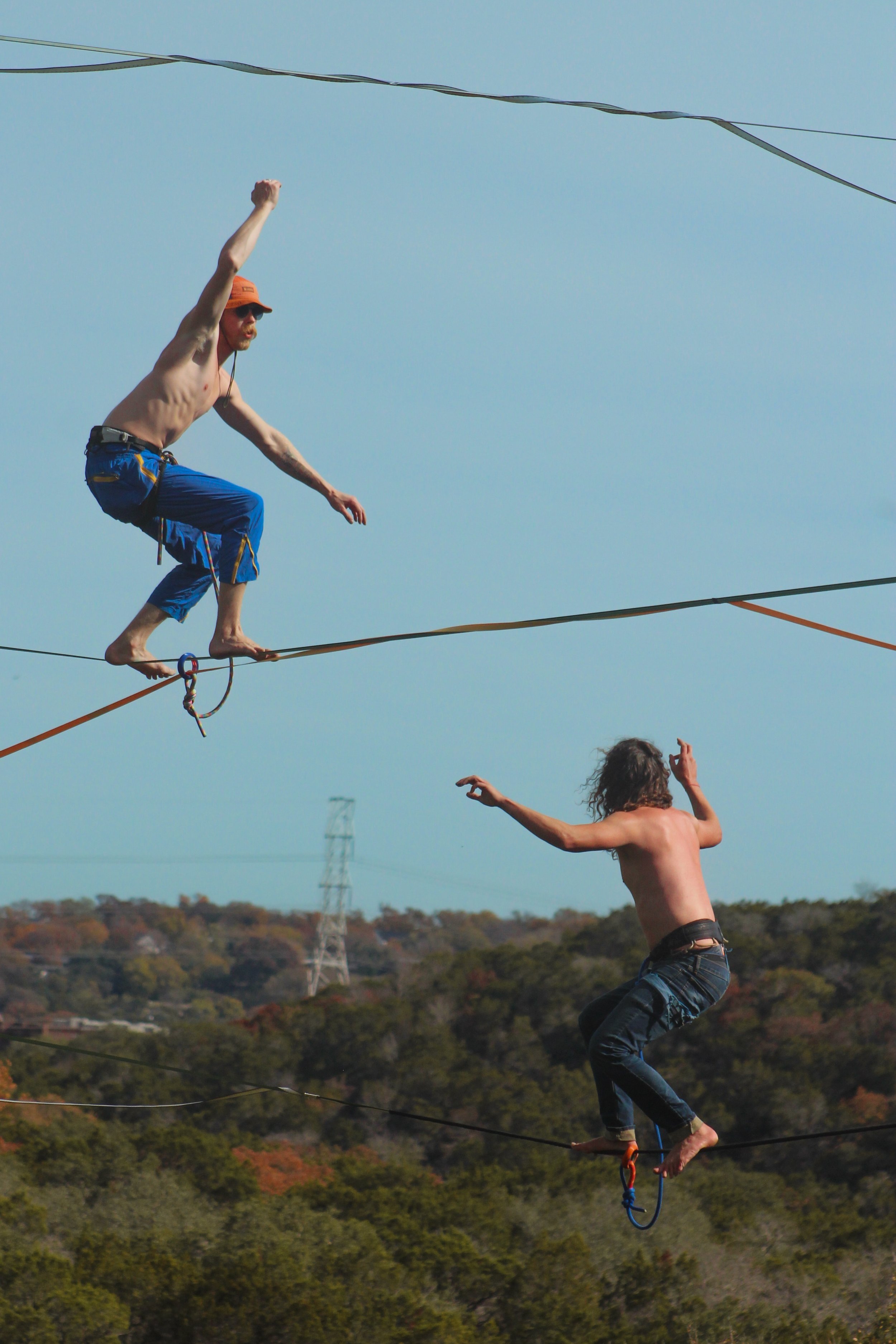

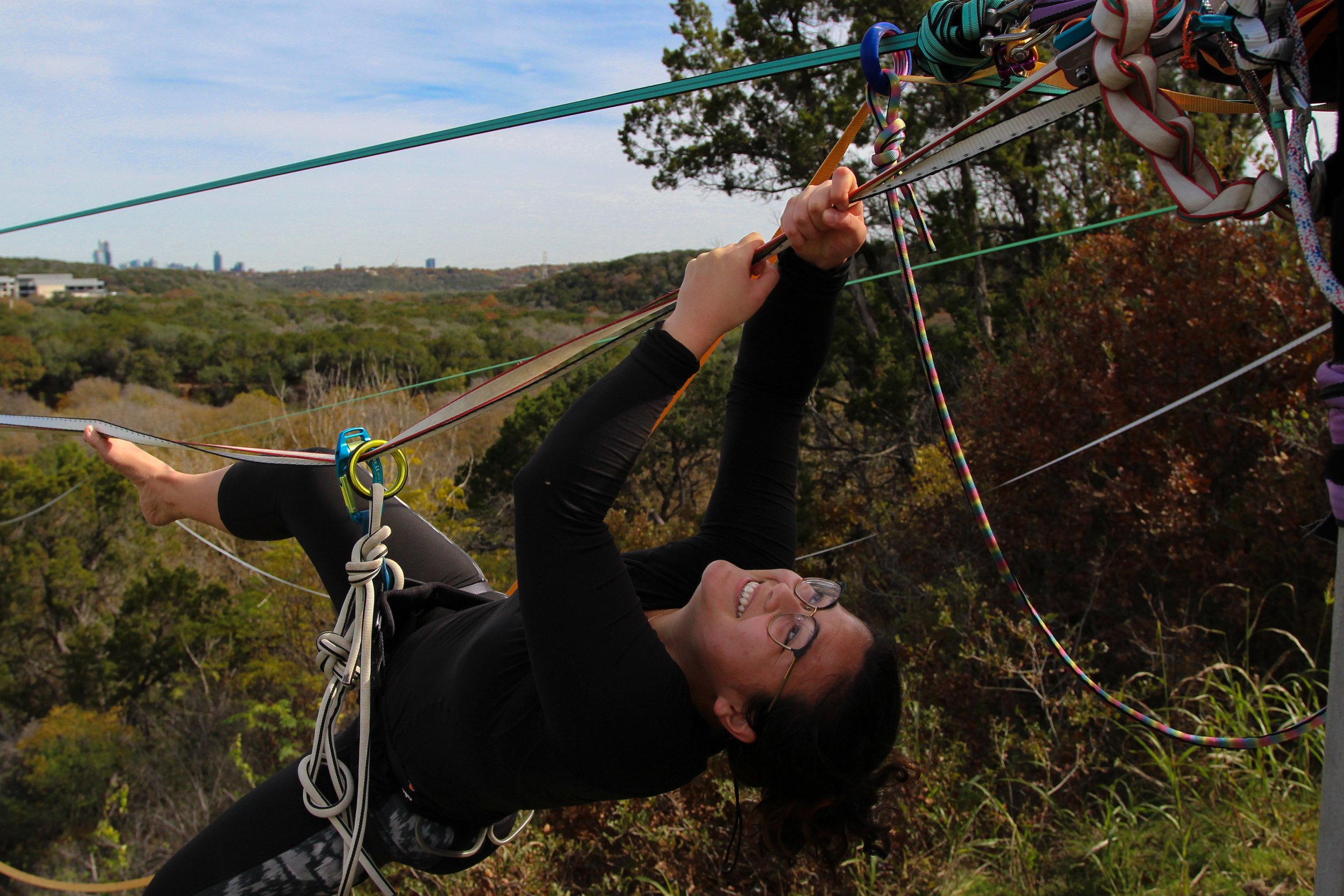
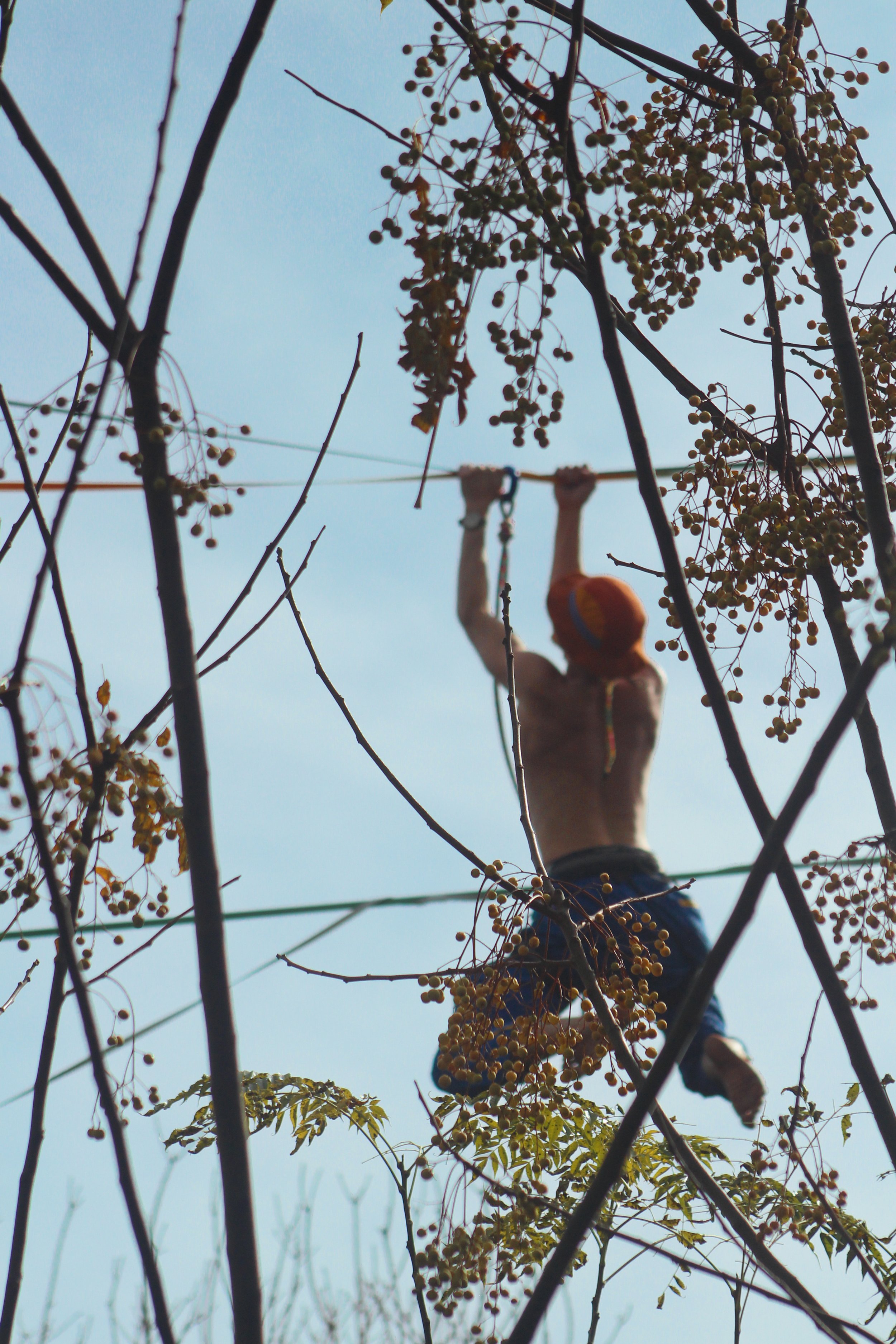

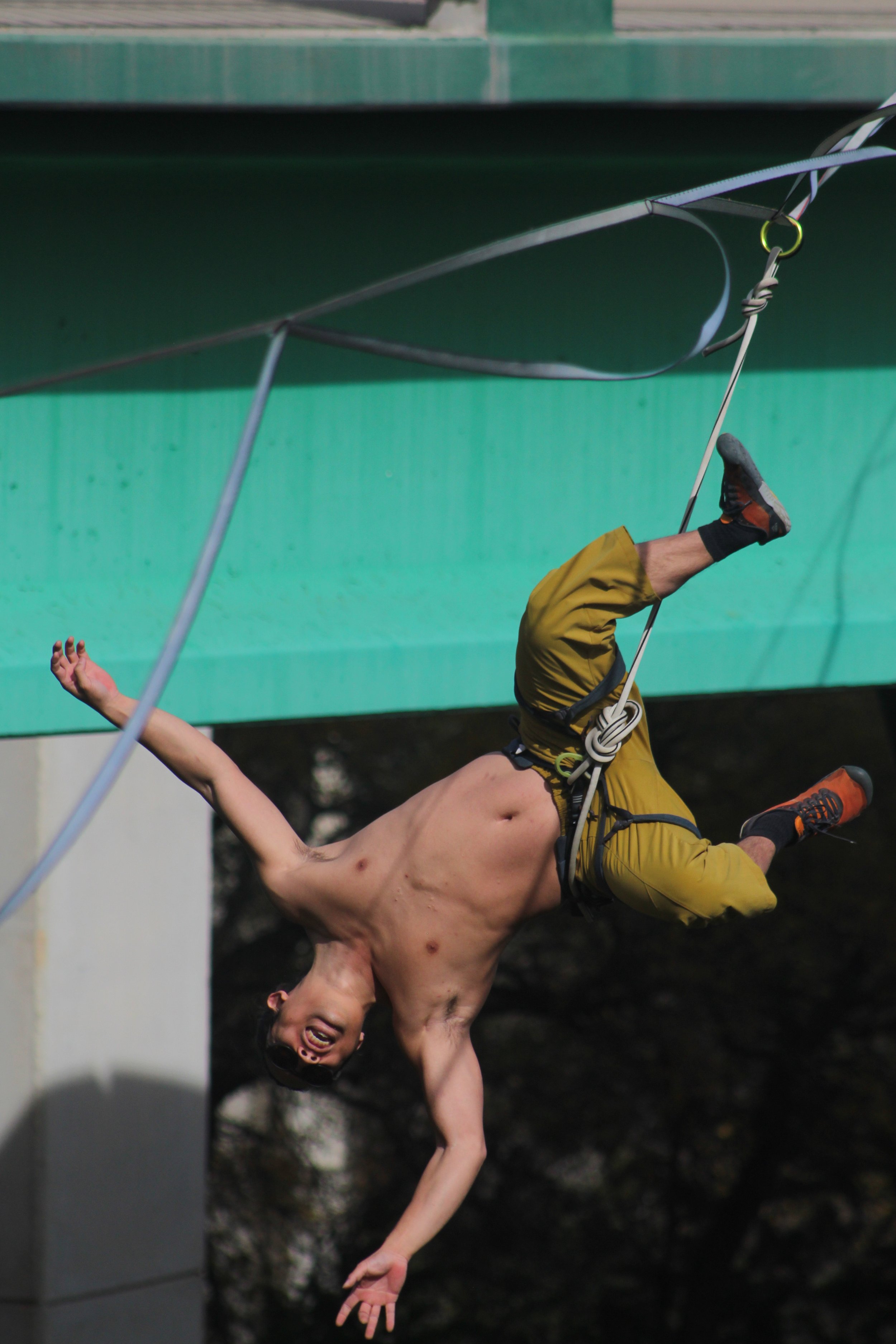
When Aaron Yang touched down on the ground after balancing across a one-inch wide slackline nearly the length of four football fields, tears streamed down his face. Yang, a data scientist and slackline hobbyist who crossed the 390-meter slackline, said the hour and a half between two mountains in Durango produced intense ups and downs, along with a great buildup of cortisol.
“I don't know what giving birth is like, but it felt like giving birth,” Yang said. “When you're on that big of a line, you can't get off; the only option is to keep going. Every time I fell, I couldn't cry, I couldn't stress out, I maintained composure and just kept going.”
Yang is a prominent member of ATX Slacks, a community of slackliners in Austin that aims to create a space where newcomers and long-time slackers can get used to the feeling of being on a line. Throughout the week, participants mainly practice in their “dojo,” an area just under Mopac Expressway near the Gaines Park/Twin Falls entrance to the Barton Creek Greenbelt.
While most hobbies involving suspension in the air are conducive to adrenaline rushes, Yang said slacklining can actually be a form of active meditation.
”If you’re calm, the line will be calm,” Yang said. “If you’re nervous and shaky, the line will shake. It’s really important to learn how to control your emotions. That’s one of the things I like about this sport, is learning how to calm yourself down.”
Slacklining offers recreationists substantial health benefits, including enhanced physical and mental strength. Equally as important, however, the sport can be a source of fun.
Kate Archer, a member of ATX Slacks who has been slacklining for seven years, first attended an open-to-all event at the Lady Bird Lake Boardwalk. She was instantly hooked.
“The people that were doing it looked like they were having the most fun and I was just like, ‘I want to do it,’” she said. “I tried it the first night and I stayed for four hours. I loved it with the veracity that people love football.”
Archer said Austin’s slacklining community used to be exclusive – a space where one had to know somebody to take part because of the potential safety hazards. Now, ATX Slacks works to extend the invitation to anyone interested in developing their skills.
Archer especially looks out for women who are looking to break into the sport.
“For me, it's really important to protect this space to help women get into [slacklining],” Archer said. “I want to be a part of the public rigs so that women can show up, safely learn from another woman, learn what it's like to take up your line space, test your nervous system and not have it be this high-pressure environment.”
Muhammad “Mo” Martinez, a short-term Austin resident who travels in his van attending slacklining gatherings around the country, noted that although slackliners come from a variety of backgrounds, they naturally tend to share the same philosophies.
“I think it’s fascinating how so many different walks of life and people from different backgrounds [come] on their own accord,” Martinez said. “And at the same time, [they] draw the same kind of wisdom from this practice. There's no book or instructional guide about any of this stuff and yet we all kind of came to this.”
Photography by Chloe Rech and Alec Barrett